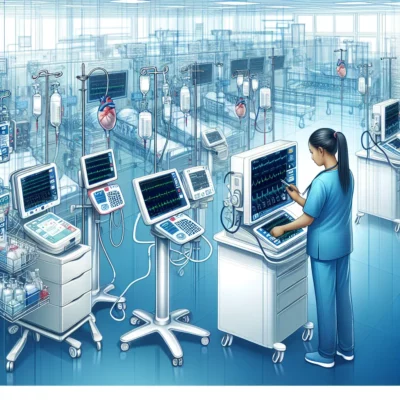Understanding Device Management in Healthcare
In the ever-evolving landscape of healthcare, device management systems have emerged as pivotal components in ensuring high-quality patient care and operational efficiency. These systems encompass the processes and technologies used to oversee, maintain, and optimize medical devices within healthcare facilities. From infusion pumps to MRI machines, effective device management ensures that these critical tools are available, functional, and compliant with regulatory standards.
Efficient device management is crucial for several reasons. It minimizes the risk of device-related errors, enhances patient safety, and ensures that healthcare providers can deliver timely and effective care. Furthermore, streamlined device management contributes to operational efficiency by reducing downtime and maintenance costs, ultimately leading to better resource allocation and financial performance.
Key Performance Indicators (KPIs) Overview
Key Performance Indicators (KPIs) are quantifiable measures used to evaluate the success of an organization or specific processes within it. In the context of healthcare device management, KPIs serve as essential tools for assessing the effectiveness and efficiency of device management systems. They provide insights into how well devices are being utilized, maintained, and aligned with regulatory requirements.
The benefits of using KPIs in healthcare settings are manifold. They facilitate continuous improvement by identifying areas that require attention, enabling healthcare facilities to make data-driven decisions. KPIs also help in benchmarking performance against industry standards, ensuring that healthcare organizations remain competitive and compliant with evolving regulations.
Essential KPIs for Device Management Systems
Device Utilization Rate
The device utilization rate is a critical KPI that measures how often medical devices are used relative to their availability. To calculate this, divide the total time a device is in use by the total time it is available for use, then multiply by 100 to get a percentage. A high utilization rate indicates that devices are being effectively used, which can lead to cost efficiency and improved patient care. Conversely, low utilization may signal underuse, prompting a review of device allocation and scheduling practices.
Device Downtime and Maintenance Efficiency
Device downtime refers to periods when medical devices are not operational due to maintenance, repairs, or other issues. High downtime can disrupt healthcare operations, delay patient care, and increase costs. Strategies to minimize downtime include regular preventive maintenance, real-time monitoring systems, and efficient repair protocols. By tracking downtime and maintenance efficiency, healthcare facilities can ensure devices are available when needed, enhancing overall service delivery.
Compliance and Regulatory Adherence
In the healthcare industry, compliance with regulations and standards is non-negotiable. KPIs related to compliance ensure that devices meet necessary safety and performance standards. This includes tracking the frequency of compliance audits, the number of non-compliance incidents, and the time taken to resolve compliance issues. Effective compliance management not only safeguards patient safety but also protects healthcare facilities from legal and financial penalties.
User Satisfaction and Feedback
User satisfaction is a vital KPI that reflects the experiences of healthcare professionals who interact with medical devices. High user satisfaction indicates that devices are intuitive, reliable, and meet the needs of healthcare providers. Gathering feedback can be done through surveys, interviews, and direct observation. Analyzing this feedback helps identify areas for improvement, ensuring that devices support healthcare professionals in delivering optimal patient care.
Leveraging Data for Continuous Improvement
Data collected from KPIs serves as a powerful tool for driving improvements in device management. By analyzing trends and patterns, healthcare facilities can identify inefficiencies, predict maintenance needs, and optimize device allocation. Technology and analytics play a crucial role in this process, offering advanced tools for data visualization, predictive analytics, and decision support. This data-driven approach enables healthcare organizations to enhance device management systems continuously.
Future Trends in Device Management Evaluation
As technology advances and healthcare needs evolve, new trends and technologies are poised to influence KPI development in device management. The integration of Internet of Things (IoT) devices, artificial intelligence, and machine learning can provide deeper insights into device performance and maintenance needs. Additionally, the growing emphasis on personalized medicine and patient-centered care may shift KPI priorities towards more patient-focused metrics.
Healthcare organizations must stay abreast of these trends to ensure their device management systems remain effective and responsive to changing demands. By embracing innovation and adapting to new challenges, healthcare facilities can continue to improve patient outcomes and operational efficiency.
In the dynamic world of healthcare, measuring success through well-defined KPIs is not just a strategy—it’s a necessity. By focusing on key metrics such as device utilization, downtime, compliance, and user satisfaction, healthcare organizations can optimize their device management systems, ultimately leading to better patient care and operational excellence.
